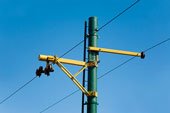SBI reported 15% growth in its net profits to Rs16.4 bn that came in line with consensus forecast. SBI’s operating P&L seems to cope well with rising rates.
Pre-provisioning profits (ex treasury, one-offs) are up 28% YoY; with a 45% growth in fee incomes, 300+bps on margins (though down), and controlled costs.This, with a little help from provision write-backs, offset a relatively large MTM charge.
SBI’s asset quality appears to have actually improved over the quarter. This would suggest a sharp turnaround from the previously weak quarter and is impressive. Management stays its high growth and market share gains course; appears to be working for now, though the environment suggests risks of this strategy are rising. SBI’s sustains aggressive growth (30%yoy), market share gain strategy. Growth also appears fairly broad-based – across segments and offshore.
SBI is expected to report FY09 EPS of Rs 109, slightly below FY08 levels but still impressive with the challenging global financial scenario.
Union Bank of India: Union Bank reported NII of Rs8.1b v/s our est. of Rs7.8b. Adjusted NII growth is 21% QoQ and 13% YoY. Interest expense declined QoQ in absolute amount despite 3% growth in deposits. While reported margins are stable QoQ at 2.63%; we believe adjusted margins have increased by >40bp QoQ to 2.7% in 1QFY09.
Both loans and deposits grew at a reasonable pace; more important, it has continued to improve the loan mix towards higher yielding loans (SME, retail) and deposit mix toward more CASA. While there is scope for further improvement, Union has shown consistent progress over the last 3-4 quarters.
Union’s asset quality was stable (ex-loan waiver impact), delinquencies contained and coverage remained high. UBI is set to increases its SME, retail and agri loan portfolios – segments that are currently under most pressure. Union Bank is expected to report FY09 EPS of Rs 28 to Rs 29.



